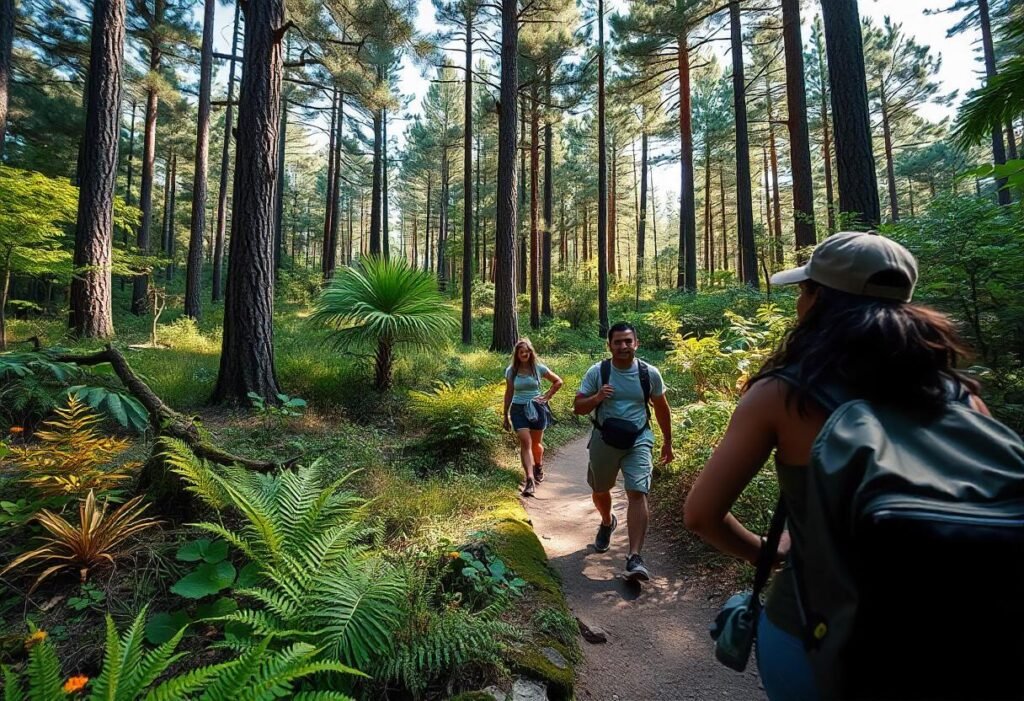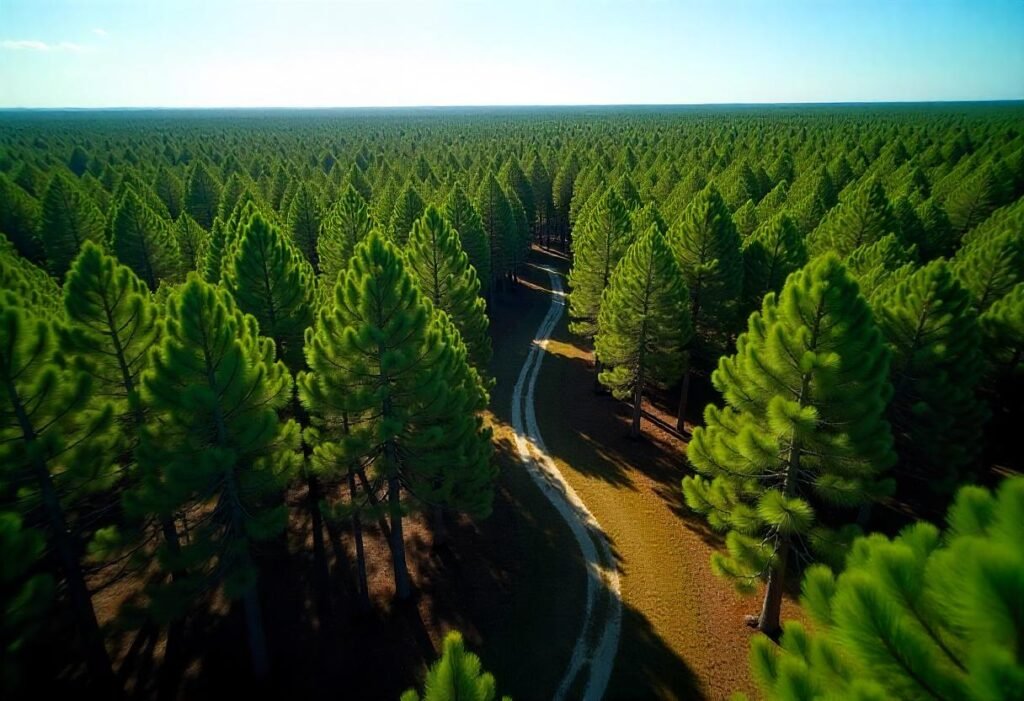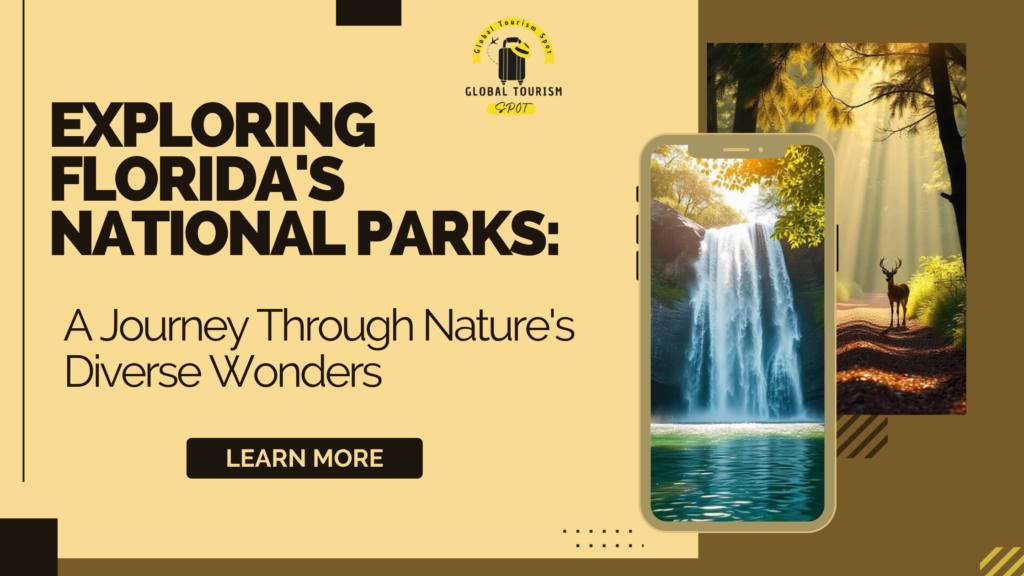Table of Contents
Introduction

Ocala National Forest is Located in North Central Florida, this forest occupies an area of more than 430 thousand acres; it is only in the second place among the national forests in Florida, behind Apalachicola. It gives tourists a view of real natural Florida with sand pine scrub, clear spring-fed lakes and rivers, an over 200 bird and other animal species home. Whether you are a hiker, camper, horse rider, hunter, fisherman or just a lover of splendid vegetation, you will not lack for options when in Ocala National Forest.
History and Overview
Ocala National Forest covering a total area of around 620 square kilometers was initially created in 1908 by Theodore Roosevelt for its unique biological features; the longleaf pine-and-sand pine-scrub landscape of Florida. Before being established as a national forest, heavy pressure from timber production, naval stores (which involves tapping pine trees for turpentine), and other related industries posed a major threat to the area’s ecosystems.
The forest is operated by the United States Forest Service with concern on conservation, but also with regard to recreation and sustainable timber production. During the same park, there are 600 plus lakes and rivers, hundreds of miles of trail and a number of campgrounds. The elevation varies from approximately 50 to a little over 100 feet and the majority of this area is comparatively level and great for hiking as well as horseback riding.
The forest is subdivided into a number of Ranger Districts, all with the main ranger station located at the eastern side in Salt Springs. The western side has the rangers put around Altoona and close to Alexander Springs. It is allowable to private firms to exploit sand pine to produce tins for citrus juice under various forms that would promote the health of sand pine forest. Concerning other uses the forest has the following non-timber products use permit which allows cattle grazing and bee keeping.
Creatures of Different Habitats and Fauna
Ocala National Forest demonstrates an extensive variety of natural areas and ecosystems such as sands, sand ridge, flat woods country, upland pine woods, scrub, freshwater marsh and swamp. Both places have specific plants and animals that have adaptability to the ecosystems in which they exist.
In the central sandhills it is characterized by longleaf pine savannas with scattered turkey oak, bluejack oak and wire grasses below the tree layer. The numerous sand ridges are inhabited by such species of the flora and fauna as gopher tortoises, indigo snake, Sherman’s fox squirrel and red-cockaded woodpecker. In the Sandhills habitat occur temporary ponds containing unique plants such as the orchids or carnivorous flowers, for example, the flowers of a pitcher plant with a hood.
Large assemblages of flatwoods occupy many portions and so are called flatwoods in often refer to the forest. Slash pines dominate an understory of saw palmetto, gallberry, and grass. This is a crucial area for the endangered Florida black bear, the white-tailed deer and turkeys and the gopher frog as well.
In scrub habitat, there are fairly frankly dunes that lead to nutrient-poor sand pines and myrtle oak that form an open top layer. Here, woody shrubs, saw palmetto, prickly-pear cactus and the lichen found in the soil do grow. Florida mouse, the spotted skunk and the eastern indigo snake besides the scrub jay and Sherman’s fox squirrel.
A large portion of the river and swamp areas are bordered by hardwood bottoms with red maple, sweetgum, live oak, magnolia and many other varieties. You will want to try to spot a wood stork, a barred owl and wood duck and a great blue heron. Such wildlife as alligators, river otters and bobcats may also be found in the wetland.
The forest contains over two hundred varieties of birds and is thus a Mecca for bird watching. Occasionally one can find such species as red-cockaded woodpecker, Southeastern American kestrel, Florida sandhill crane and crested caracara. It also gets painted buntings in the forest perimeters during the warmer months of the year.
Recreational Opportunities
This area has long and well established trails designed for short nature trails up to long back country hikes. At present there are over 30 marked trails totaling nearly 230 miles; among these most frequented are the Clearwater Lake Trail, Lake Eaton Sinkhole Trail and Yearling Trail. Generally, equestrians are permitted on most trails of the park, but there is NPS vigorously designated as hiking only. Mountain bikes are allowed only on the roads and on other paved more like multi-use trail ways.
The Ocala permits dispersed primitive camping with some conditions as shown below. For those who want even more facilities there are 5 improved campgrounds each with 30-to-60 campsites available. Agra, Florida, Salt Springs, Alexander Springs, Farles Lake and Lake Delancy listed above have electrical and water, modern bathrooms facilities. Juniper Springs provides limited tent camping with access to outstanding Florida nature. If that is the case, you will have to make bookings well ahead of spring and fall seasons because the campgrounds are booked.
More than 100 artesian wells of brackish, clear water rise from the woods; five first magnitude wells are among them. With so many cool springs the opportunities for swimming, snorkeling, canoeing or kayaking are great and all within the rainforest setting. You will have the impression that the park is opening a window into an aquarium due to the bright colorful fish, turtles, and eels in the springs.
The forest has eight special wildlife management areas that are managed particularly for wild hog, turkey, quail, deer and small game hunting. However, even outside those zones a great part of the forest is available for hunting under certain quotas depending on the period of the year. Fishermen also like freshwater and saltwater fishing with bass, bream and catfish doing very well in all the open lakes, rivers and ponds available.
For those planning to traverse the forest from horseback, several outfitters can arrange for that. Many areas are also great for mountain bike riding as well. To the south, the Ocklawaha River provides a scenic situation for boating or canoeing and to the west, the Rodman Reservoir permits motorized boats.
In any case, be aware of whether you are most looking forward to watching any athletics or performing arts and try to take time to appreciate how the scenery looks too. Kick back and breathe the fresh, evergreen and let your eyes soak up the burning orange sun at dusk, your ears for the call of a barred owl at night. The Ocala takes you to the Old Floridian spirit of the state.
Check Out: Everglades National Park: Exploring the River of Grass and Its Unique Ecosystem.
Tourism Attraction to Visit in the Ocala National Forest

While crisscrossing the trails and scenic roadways, be sure to also check out these noteworthy natural features and recreation sites:
Salt Springs
In many ways, the largest springs complex in the forest has not been significantly touched and stays majority natural. Can watch manatees over the winter or in the winter if you want to swim in the warm water here.
Alexander Springs
This first-magnitude spring provides a be }ach environment to spend time on with white sandy beach, picnic tables and a short hiking trail around the spring for people taking a family.
Silver Springs
One of Florida’s largest artesian springs is located on this site that spouts fifty-five million five hundred gallons of crystal clear water per day. Richmond Nature parks – watch animals from a distance perhaps by taking a cruise or viewing them from glass boats.
Lake Delancy
With a picturesque view, there is a trail around the lake. It gets stocked with catfish, bass and bream for fishing.
Clearwater Lake
This is a 430 acres which has attracted many forest visitors through motor boating, escape for fish, camping as well as swimming on the natural sandy beach.
Yearling Trail
Hike this 22 mile, backpacking trail through some of the forest’s untouched natural resources and scenery as well as observe wildlife.
Visit Biology station
read more about forest’s inhabitants and their ecosystems, talk to the rangers there. Looks like pretty pictures are pretty next to each other Paisley Woods are.
Rodman Reservoir
This is on Ocklawaha River with some facilities such as boating and fishing, special on bird migrating season.
Ocklawaha River
One can navigate through the forest on this river and the river gets very narrow and virtually forest-like in some parts.
Juniper Springs
Largest campground in the forest and situated near delightfully pure springs in addition to thrilling kayak courses.
Conclusion
The variety of the protected areas in the Ocala National Forest allows people to let their glance into the wild soul of Florida nature. While civilization and development continue to encroach from all sides, the Ocala is still home to native flora and fauna; and has become a fun repository of recreational activities for people. Excellent recreational areas such as springs, lakes, trails and others provide facilities to everyone.
There are a large number of options for visitors to indulge in activities such as swimming, boating, hiking, camping and the following of a diverse bird, wildlife and native wildflower population. Regardless of what brings you to the forest, the experience always presents itself by refreshing one’s energy by giving beautiful natural sights and beauty. But that’s our story and it would be best if you hear it from others as well. Come visit this national treasure yourself!
For more info : Click Here.
FAQs
What is the fee of entering the forest?
Most of the things to do in the Ocala National Forest are free; this includes entry into the forest. This means that you’ll have to pay day-use fees for some developed recreation sites like the springs. The charges for the campsites range between $10 and $25 for each night of stay depending on the services offered.
Which part of the year is best to travel to?
The temperature is favorable with warm sunny days and cool nights during the months of October to May. Summer is hot, wet and associated with thunderstorms. Others come during the winter because that is the coldest time up there in the northern hemisphere.
Can I do kid-friendly activities?
After visiting springs and campsite beaches are most likely to attract kids. Go for a rowing on the rivers in a rented canoe or kayak. It is possible to try some easy trails for hiking or walk through the nature loop trail found at Lake Delancy. If you want to go horseback riding or wildlife viewing, this is also a good time to play some camp games. The older children can go fishing, biking or do geocaching through the forest.



